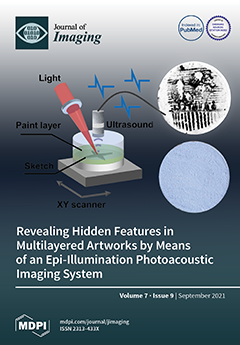Open AccessReview
Micro-CT for Biological and Biomedical Studies: A Comparison of Imaging Techniques
by
Kleoniki Keklikoglou, Christos Arvanitidis, Georgios Chatzigeorgiou, Eva Chatzinikolaou, Efstratios Karagiannidis, Triantafyllia Koletsa, Antonios Magoulas, Konstantinos Makris, George Mavrothalassitis, Eleni-Dimitra Papanagnou, Andreas S. Papazoglou, Christina Pavloudi, Ioannis P. Trougakos, Katerina Vasileiadou and Angeliki Vogiatzi
Cited by 36 | Viewed by 7324
Abstract
Several imaging techniques are used in biological and biomedical studies. Micro-computed tomography (micro-CT) is a non-destructive imaging technique that allows the rapid digitisation of internal and external structures of a sample in three dimensions and with great resolution. In this review, the strengths
[...] Read more.
Several imaging techniques are used in biological and biomedical studies. Micro-computed tomography (micro-CT) is a non-destructive imaging technique that allows the rapid digitisation of internal and external structures of a sample in three dimensions and with great resolution. In this review, the strengths and weaknesses of some common imaging techniques applied in biological and biomedical fields, such as optical microscopy, confocal laser scanning microscopy, and scanning electron microscopy, are presented and compared with the micro-CT technique through five use cases. Finally, the ability of micro-CT to create non-destructively 3D anatomical and morphological data in sub-micron resolution and the necessity to develop complementary methods with other imaging techniques, in order to overcome limitations caused by each technique, is emphasised.
Full article
►▼
Show Figures






